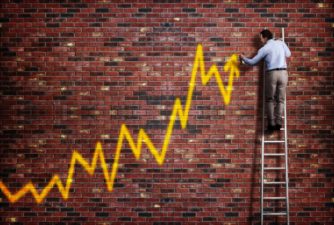The S&P/ASX 200 Index (ASX: XJO) spent most of the day modestly in the red.
Then, at 2:30pm AEDT, the Reserve Bank of Australia (RBA) released its latest interest rate decision.
And the ASX 200 plunged 0.9% in the minutes that followed.
The RBA board announced another 0.25% increase in interest rates. That lifts Australia's official cash rate to 3.85%.
Atop today's cash rate hike, the RBA board also increased the interest rate on Exchange Settlement balances by another 0.25%, taking that to 3.75%.
ASX 200 investors are hitting the sell button as consensus expectations had the RBA holding fire today. Of the big four banks, only Commonwealth Bank of Australia (ASX: CBA) had forecast a rate hike.
Having paused in the tightening cycle in April, following ten consecutive interest rate hikes, this marks the 11th rate hike from the central bank since last year.
The first rate hike from the RBA in more than 12 years was delivered on 3 May 2022. At the time the official cash rate still stood at a rock bottom 0.10%.
With rates now up at 3.85%, some ASX 200 shares could come under additional pressure.
Why did the RBA opt to tighten once more?
Explaining why the board raised the cash rate again this month, RBA governor Philip Lowe said, "Inflation in Australia has passed its peak, but at 7% is still too high and it will be some time yet before it is back in the target range."
The central bank's target range for inflation is 2% to 3%, so indeed, it would appear ASX 200 investors might have a while to wait before interest rates begin to head lower.
Lowe noted that despite last month's pause, the bank was determined to get inflation in check and that it will likely take several years for inflation to fall back to 3%.
The RBA is forecasting inflation to be around 4.5% in 2023 before dropping to 3% by mid-2025. Goods inflation has pulled back sharply recently. But services price inflation and rising labour costs remain a concern amid historic low unemployment levels.
And Lowe made it clear that tackling inflation remains the central bank's primary objective, saying:
The board's priority remains to return inflation to target. High inflation makes life difficult for people and damages the functioning of the economy. And if high inflation were to become entrenched in people's expectations, it would be very costly to reduce later, involving even higher interest rates and a larger rise in unemployment.
ASX 200 investors may also be feeling jittery from Lowe's admission that, "The path to achieving a soft landing remains a narrow one."
The RBA expects the Aussie economy to keep growing, but slower than normal. It's forecasting GDP growth of 1.25% in 2023 and "around 2% over the year to mid-2025".
What's ahead for ASX 200 investors?
Looking at what ASX 200 investors can expect in the months ahead, Lowe concluded:
Some further tightening of monetary policy may be required to ensure that inflation returns to target in a reasonable timeframe, but that will depend upon how the economy and inflation evolve.
He said the board will keep closely monitoring developments in the global economy, trends in household spending and the outlook for inflation and the labour market.
And as in previous statements, he stressed that the RBA "will do what is necessary" to return inflation to target.









